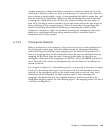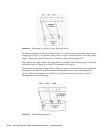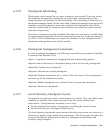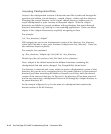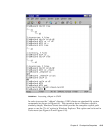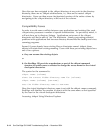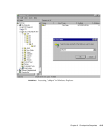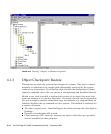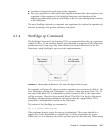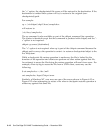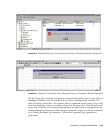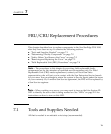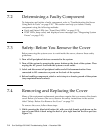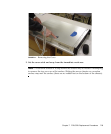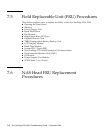
Chapter 6 Checkpoints/Snapshots 6-17
■ Overhead is imposed at each layer of the operation
■ The copy operation is a block-for-block operation because the client system is not
cognizant of the structure of the StorEdge filesystem, and therefore of the
underlying relationship between the blocks in the live and checkpointed versions
of the filesystem.
The new StorEdge internal cp command was engineered to confine the operation to
the filer, resulting in far greater efficiency and speed.
6.1.4 StorEdge cp Command
The StorEdge Command Line Interface (CLI) cp command effects the copy operation
within the filer. As an ancillary benefit, the command is cognizant of the filesystem
architecture and it can copy only those blocks that are not referenced in the live
filesystem, using StorEdge's copy-on-write implementation.
FIGURE 6-11 Sharing Blocks Between Live and Checkpoint File Systems
For example, in Figure 6-11 after a cp restore operation, two versions of a File A - the
Live Filesystem version and Checkpoint x's version - share the same block: 123. In
this case when Block 123 is referenced by either version of File A, the same block
will be accessed. Should a client modify Block 123 of File A in the live filesystem,
StorEdge's checkpointing mechanism will ensure that the original Block 123 is
preserved in checkpointed versions of the filesystem.
The syntax of the StorEdge cp command is:
cp [-c] source destination
This command simply copies the source to destination. The source should be a
regular file. If the destination is a regular file, it will be overwritten by source.
Otherwise, if it is a directory, the source will be copied to that directory. When using



